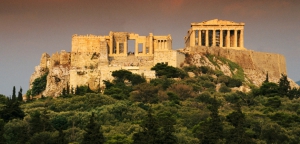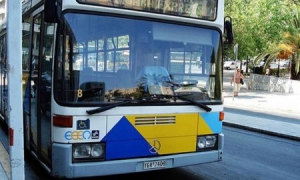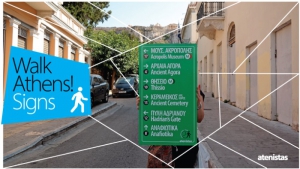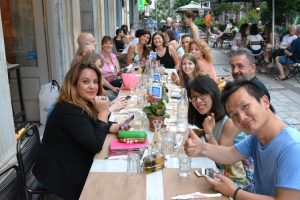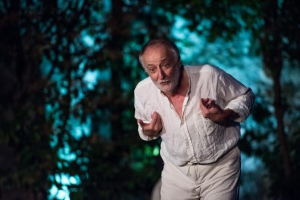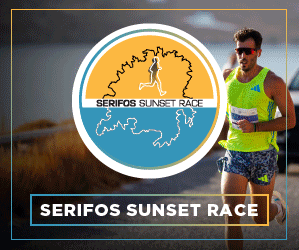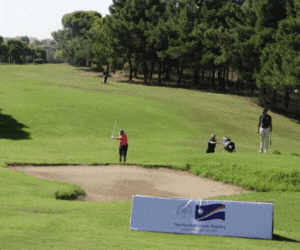LIFE & CULTURE
XpatAthens
Wednesday, 01 July 2015 07:00
Capital Controls Open Acropolis To Debit & Credit Cards
Unprecedented capital controls in 21st century Greece apparently have a “silver lining”, albeit a very slim one, as “red tape” appears to be receding on some fronts.
Take the ticket booths at the Athens Acropolis, for instance, which will for now accept credit cards and debit cards for the first time! They’ll still accept cash, too, assuming tourists bring enough with them.
To read more, please visit: Protothema
Take the ticket booths at the Athens Acropolis, for instance, which will for now accept credit cards and debit cards for the first time! They’ll still accept cash, too, assuming tourists bring enough with them.
To read more, please visit: Protothema
Published in
Local News
Tagged under
Monday, 29 June 2015 23:16
All Mass Transportation Is Free This Week
The government has announced that all mass transportation will be free for the entire week and until banks re-open on Monday July 6th. This includes all train lines, buses, trollies, and tram. This does not include Proastiakos train lines and KTEL buses.
Translated by: XpatAthens
Source: In.gr
Translated by: XpatAthens
Source: In.gr
Published in
Local News
Tagged under
Tuesday, 30 June 2015 07:00
Tyrosalata - Spicy Feta Dip
As summer hots up, why not add this spicy dish to your BBQ or gathering?
There's Spicy Feta Spread and Spicy Feta Dip. The main difference between the two is that the dip is more liquidy. The ingredients also differ somewhat. In order to make it more creamy, what better than to use a rich and creamy helping of Greek yogurt to form the basis? It does wonders for tzatziki, why not Spicy Feta Dip?
Use peppers, spice up as much or as little as you like by using chilli powder, serve with pitta or bread (wine optional!) and there you have it.
Ingredients
1 tablespoon Olive Oil
1 large green pepper, miled, sliced in hald and seeded
1 cup crumbled feta
1/2 cup Greek yogurt
1/4 teaspoon garlic powder
1/4 teaspoon chili powder
1/2 teaspoon lemon juice
Pepper
Olive Oil - enough to achiieve dip consistency
Salt*
To read more, please visit: Lemon & Olives
Published in
Greek Food & Diet
Tagged under
Monday, 29 June 2015 07:00
Anthony Quinn Art Exhibition At Chicago’s National Hellenic Museum
Artwork by late actor Anthony Quinn will be exhibited at the National Hellenic Museum in Chicago. Quinn played the emblematic role of Zorba in the movie “Zorba the Greek.”
The exhibit entitled “Transcending Boundaries: The Art of Anthony Quinn,” opened at the museum in Chicago’s Greektown neighborhood on Friday. It features more than 80 of the actor’s paintings and sculptures along with a replica of the studio where he worked.
Quinn started drawing and sculpting at the age of 17 and continued to practice his art until his 80s. His art talent was rewarded by gaining an apprenticeship under architect Frank Lloyd Wright.
To read more, please visit: The Greek Reporter
Published in
Greece In The News
Tagged under
Monday, 29 June 2015 08:00
The Seven Best Campsites In The Cyclades
As summer approaches, holidays around the Greek Islands spring to mind. Staying in small hotels, even family run apartments can get expensive, so how about camping?
Sadly campsites seem to be diminishing in number. Bye bye Kea Camping in Korissia, Ios Camping on Yialos or Parasporos Camping on Paros. However, the ones that are still around, are still around for a reason: they are good value for money in an idyllic setting.
The standard of campsites in the Cyclades is one of the highest in the Mediterranean. You should expect to pay €5-7 per person and about €2-4 per tent; find basic cabins without W/C for €10-15; and sometimes bungalows with own a/c and W/C for around €20-25 per day. Oh, and they also rent tents, so you need only bring a sleeping bag.
All campsites below are shaded, flat, have a multiplicity of electricity points, free wi-fi, a mini-market (as they call grocery stores nowadays in Greece), provide transfers to ferries and airplanes, have a beach bar-cum-restaurant nearby and, most of all, are next to the sea.
1) Camping Aghia Iríni Aghia Irini, Paros
Out of the way, right on the beach, overgrown with olive trees and citrus trees. It feels like you are camping in someone’s overgrown garden.
2) Krios Beach Camping Parikiá, Paros
The flatist camping you'll come across (important!) on the best beach near the Paros capital with a really cool beach bar next door. It has a bus that collects people from town and brings them in at 6pm to party Greek-style (including plate smashing) until 9.30pm when they bus them back.
3) Coralli Camping at Livadhakia Beach, Serifos
The location, just back from the excellent Serifos beach is great and the management even better. Superb communal pool, restaurant, bar and free wi-fi.
To read more, please visit: The Jolly Traveller
Published in
Travel Greece
Tagged under
Monday, 29 June 2015 07:00
New Signs Make Athens Walking Experience Easier
City activist group atenistas are placing signs throughout the historic center of Athens in efforts to make walking the Greek capital easier for residents and travelers.
Under the motto: “WalkAthens!”, the signs have initially been placed in 15 key points across the city center, including at the Archaeological Museum, Omonoia, Syntagma, Monastiraki, Thissio, Psiri and Vathi squares.
The green signs feature directions to six surrounding locations in Greek and English, bearing a directional arrow and the estimated walking timeas well as info on nearby metro stations.
To read more, please visit: Greek Travel Pages
Published in
Local News
Tagged under
Monday, 20 November 2017 07:00
Rise & Dine - Athens' Top 5 Grab-And-Go Breakfasts Downtown
Breakfast; it's the most important meal of the day, but sometimes there's just not enough time. Winnie Yang, from Culinary Backstreets, lets us know her favorite local restaurants for the best grab-and-go breakfasts.
In Athens, bread and pies still form the foundation, if not the substance, of many a meal – breakfast especially. Make like a local and start your day off right with cheese pie or koulouri from one of our top picks. (These places are also perfect for a pick-me-up later in the day.)
1. Pnyka
Address: Petraki 24
Hours: 7am-5:30pm; closed Sunday
Hours: 7am-5:30pm; closed Sunday
Pnyka sets itself apart from the chains that have taken over Athens through its methods and its commitment to using quality ingredients. It’s known for its hearty whole-grain loaves, made from flour the bakery mills itself at the headquarters in Pagrati, but our favorite is the spanakopita, which is peerless in a city full of spinach pies.
2.Takis
Address: Misaraliotou 14, Koukaki
Hours: Mon.-Fri. 7am-9pm; Sat. 7am-4pm; closed Sunday
Hours: Mon.-Fri. 7am-9pm; Sat. 7am-4pm; closed Sunday
Located in residential Koukaki, this bakery is famous for its breads, cheese pies, and tsoureki. Customers start lining up the night before Lent to get their hands on Takis’s lagana, the focaccia-like bread sprinkled with sesame seeds that’s eaten to mark the beginning of the holiday. The bakery’s flavorful vasilopita, a cake eaten during New Year’s, is a reason to visit at the end of the year, but Takis is great any day of the week, any time of year.
3. Ariston
Address: Voulis 10, Syntagma
Hours: Mon., Wed., Sat. 7am-6pm; Tues., Thur., Fri. 7:30am- 9pm; closed Sunday
Hours: Mon., Wed., Sat. 7am-6pm; Tues., Thur., Fri. 7:30am- 9pm; closed Sunday
This bakery lives up to its name, “excellence” in Greek. It’s been run by the same family since it opened in 1910 in this very location, and in the century-plus of its existence, Ariston has perfected the art of making pies. There are at least 15 varieties on offer every day, the top seller of which is the kouro, half-moon shaped, crumbly, butter-rich dough encasing a rich filling of feta.
To read this article in full, please visit: I Cook Greek
Published in
Restaurants In Athens
Tagged under
Friday, 26 June 2015 07:00
Aegean Airlines Voted Best Regional Airline In Europe
Greece’s Aegean Airlines was named best regional airline in Europe for the fifth consecutive year during the presentation of the Skytrax World Airline Awards 2015. Moreover, Aegean Airlines, member of Star Alliance, secured the second place in the category “World Regional Airline.”
The ceremony was held during the Paris International Airshow.
For more information, please visit: Greek Reporter
The ceremony was held during the Paris International Airshow.
For more information, please visit: Greek Reporter
Published in
Greece In The News
Tagged under
Thursday, 25 June 2015 07:00
TBG Celebrates Six Months Of Travel Blogging Teamwork
Greece Based Travel Bloggers Continue to Make a Social Media Impact - Putting Greece on the Map
The members of the first network of Greece based travel bloggers gathered in St. Irene Square in Athens to celebrate six months of teamwork during a dinner hosted by Manas Kouzina-Kouzina.
The blogger members consist of both expats and Greek bloggers with an international reach. Since TBG started in Jan. 2015, it has grown to 20 members:
“We’ve proven that teamwork matters and by working together we learn from each other. When we go and visit Greek destinations, our social media reach really helps promote touristic businesses in Greece,” says Rebecca Hall, one of the first members of TBG.
Today, TBG’s social media reach to date is:
Facebook: 46,547
Twitter: 18,841
Instagram: 8,135
During the six month celebration, members consistently shared, tweeted and posted the various traditional Greek dishes enjoyed at the event. Mana’s Kouzina-Kouzina is one of the Greek businesses that successfully opened during the crisis specializing in magirefta or slow-cooked and baked traditional dishes hailing from all over specific villages, areas and the islands of Greece. Homemade desserts were delivered from Thessaloniki by blogger member Amber Charmei, the publisher of Provocolate.
TBG has helped to promote authentic experiences working with various businesses including Discover Greek Culture, Scooterise, Alternative Tours of Athens, Livin Lovin, The Clumsies, Grecotel Pallas Athena, Keadivers, Sattas Group, ZanteHotels4U and more. TBG has educational partnerships with Xyni Glyfada as well as the International Health Tourism Conference. The professional networking group has also participated in blogger familiarization trips at the Montanema Handmade Village in Central Greece, Kea and Zakynthos islands.
Each TBG member is based in Greece and blogs about a specific Greece travel related theme such as family travel, food, adventure travel and culture. Each member must meet specific professional criteria to be approved as a beginner or full-member. Currently, TBG is working with more destinations and businesses to plan more events and travel excursions until the end of the year.
About Travel Bloggers Greece – TBG: TBG is the first blogger networking group established in Greece. The members are Greeks and expats who live in Greece and cover Greece as a travel destination in various languages. They abide by ethical and professional standards and encourage positive cooperation, education and collaboration among their diverse membership. TBG works with Greece-based businesses to help promote authentic travel and increased awareness of Greek travel destinations.
For more information please visit: Travel Bloggers Greece
Published in
Local News
Tagged under
Wednesday, 24 June 2015 07:00
Interview With Emmy Award Winning Actor And Director Yannis Simonides - "Socrates Now"
We all know who Socrates was: only one of the greatest Greek philosophers of all time. Socrates Now is a 75 minute solo theatre performance (in English with Modern Greek subtitles) highlighting the Apology of Socrates. Performed in seventeen countries so far—festivals, universities and theatres—in 2015 performances are planned from 27th June until 19th July and is expected to attract over 2000 viewers of all ages.
Starring and co-directed by the Emmy Award Winning actor and scholar Yannis Simonides, he gives us some insight.
Born in Constantinople, raised in Athens and educated at Yale in the United States, you are truly an international, Mr. Simonides…but where do you feel your roots really lie?
Absolutely and fully in Greece, on every rocky path I have traversed, in every harbour I have anchored in, every sprig of thyme I have inhaled, every amphitheatre I have been graced with, every modern Odysseus I have encountered
Whilst your tour a lot worldwide, have you ever spent an extended period of time living and working in Athens? What has been your experience?
I have and quite often, and now I have a pied-a-terre in Psyrri, facing the Rock, listening to bongos and santouri all night long, taking in the fantastic graffiti, agonizing with the rest of my compatriots, performing in English and Greek for my fellow citizens and the citizens of the world, this 69 year old wandering minstrel could not be happier and more privileged
You’ve been performing Socrates Now for 10 years. You must feel a personal connection to the philosopher by now. Do you feel yourself identifying with any of his character traits?
10 years, 18 countries, over 200,000 audiences – there is no way that one could attempt this pilgrimage without being fundamentally altered by the experience. My morality has evolved into simple ethics, my humor has gotten sharper yet gentler, my attitude more childlike, my wisdom more prudent, my joy in life more delicious, my peace with my mortality more genuine; though, unfortunately, my Socratic determination to change the world has gotten out of hand and something needs be done about it. Any ideas?
To read more, please visit: Life Beyond Borders
For detailed event information and to book tickets, please click HERE.
For detailed event information and to book tickets, please click HERE.
Published in
People
Tagged under


